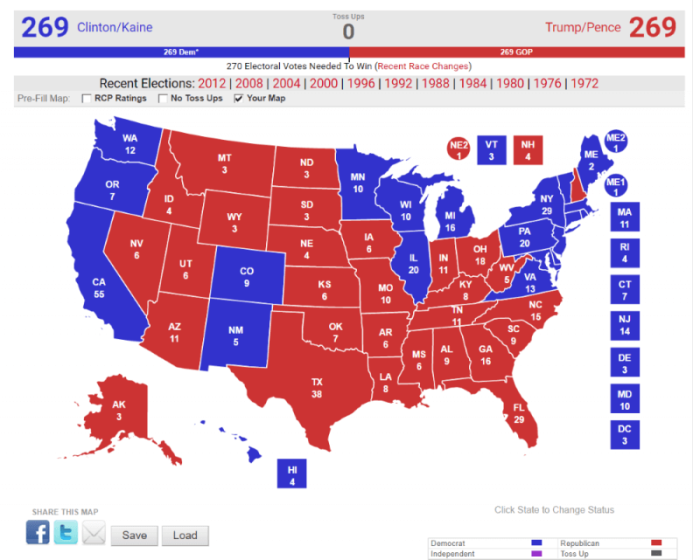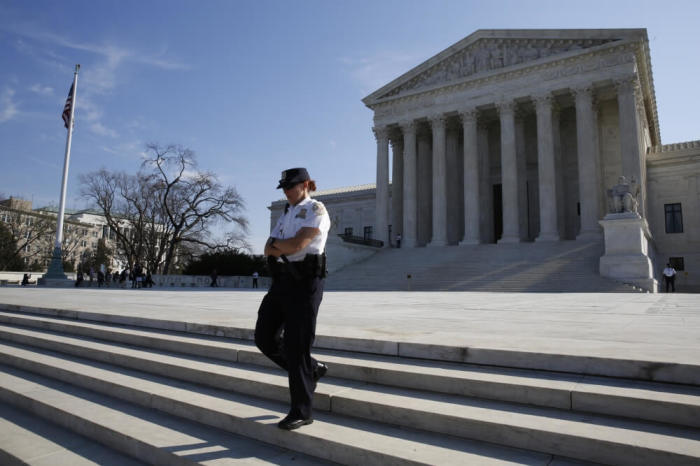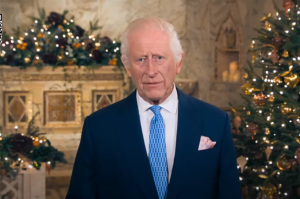3 Unusual Outcomes to Look for After the Election

On Tuesday tens of millions of Americans went to the polls to elect the next president of the United States. Most worked under the assumption that all should go smoothly.
However, there is always a chance for things to go awry or even against the projected outcomes. This can apply to both the presidential race as well as the Senate races that are also on the ballot.
Among the many possible bizarre outcomes from the election, below are three election-related things that could happen after the ballots are counted.
1. Electoral College Tie

With such a close race between Clinton and Trump, there is a unlikely yet still plausible scenario in which neither major party candidate receives the necessary electoral college majority to win.
According to the presidential campaign election information site 270towin.com presently notes 97 different scenarios that could result in neither major party hopeful getting enough electoral points.
"While unlikely, a 269-269 electoral college tie is not out of the question in a competitive 2016 presidential election," noted the site.
In the event of a tie or no candidate getting at least 270 points, the decision of who becomes the next president will go to the United States House of Representatives.
Reads Article Two of the U.S. Constitution, "if there be more than one who have such majority, and have an equal number of votes, then the House of Representatives shall immediately choose by ballot one of them for President; and if no person have a majority, then from the five highest on the list the said House shall in like manner choose the President."
Article Two also notes that rather than being a vote of all House members, "the votes shall be taken by States, the representation from each state having one vote; A quorum for this purpose shall consist of a member or members from two thirds of the states, and a majority of all the states shall be necessary to a choice."
If the first ballot still results in a tie, the House will continue to vote until January 20 of the following year. If by that date there is still no clear result, then either the vice president elect, if one has been chosen, or the speaker of the House will serve as "interim president" until a winner is determined.
2. Senate Tie

During the election cycle of 2014, Republicans gained control of the United States Senate, garnering 54 seats to the Democrats' 46.
Partly because of the higher number of seats to defend and partly because of the polarizing nature of the Trump campaign, there is a chance the Republicans will lose control of the Senate.
"Republicans faced a daunting task at the outset of the 2016 election cycle: They held 24 of the 34 seats on the ballot — meaning many more to defend," reported CNN.
"But strong GOP candidates have helped the party pull some contests in presidential swing states off the board."
There is a good chance that by the end of the evening neither party will have a majority, with the results being 50-50 for the upper house. Who then can claim a majority?
That will depend on the results of the presidential election, since according to the Constitution the vice president serves as president of the Senate.
"Article I, Section 3 of the Constitution specifies that The Vice President is the President of the Senate. The Vice President has no vote unless to break a tie in some matter before the Senate," noted 270towin.com/.
"Therefore, if the election leads to a 50-50 party split in the Senate, the Vice-President's vote will give the majority to his or her party."
3. Contested Election Before a Split Supreme Court

Ordinarily, the highest court in the land has nine members. However, due to the death of Justice Antonin Scalia and the refusal of the Republican-controlled Senate to consider Merrick Garland, the Supreme Court has eight sitting members.
This means that should either the Clinton or Trump campaign bring a lawsuit akin to the controversial Bush v. Gore case from 2000, the high court may divide along the middle.
So what happens if such a case claiming rigging or demanding a recount arises and the Supreme Court goes four to four? The answer will likely arise from a lower court.
"In such a case, a lower-court ruling would probably be left to stand, and the decision would carry even less authority than Bush v. Gore, the high court's widely criticized 5-4 ruling resolving the 2000 presidential election," stated Politico.
"That means the federal appeals courts or state supreme courts could wind up being the final arbiters in deciding who wins the White House."
While this may seem like it is anybody's game, the Associated Press pointed out that the odds might actually be in favor of the Trump campaign.
"A Supreme Court appeal also would raise another delicate question. Would Justice Ruth Bader Ginsburg participate after the comments she made about Trump in July to The Associated Press and other news outlets?" asked the AP.
"Federal law requires recusal from any case in which a judge's impartiality 'might reasonably be questioned.' But at the Supreme Court, a justice alone is the final judge of whether to sit out a case."





























